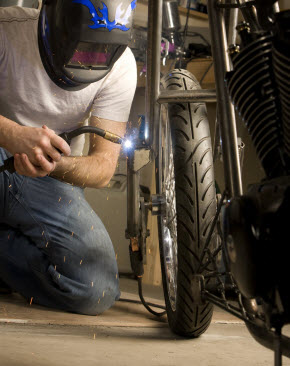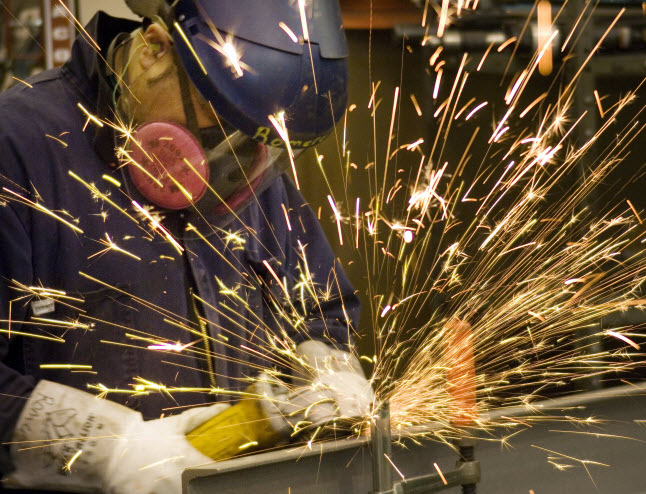Welding Basics Guide:

This welding basics article is for the Professional and the Novice metalworker: As a Professional, you may have been welding for years, but may have forgotten some things or perhaps have slipped into some undesirable habits.
We will re-introduce you to safety issues, processes used, and assembly refreshers. On the other hand, if you are new to welding and Chopper Fabrication and just starting out, this document will introduce you to some very important issues relating to the Chopper Fabrication process.
A Welding Memory Aid:
Acrostics are memory aids used virtually in all technical disciplines. An acrostic is a composition in which sets of letters (as the initial or final letters of the lines) taken in order form a word or phrase. One such aid forms the word CLASS:
C = Current Setting
L = Length of Arc
A = Angle of Electrode
S = Speed of Travel
S = Selection of Electrode
(C) Current Setting is essential to a good appearance and the strength of the weld.
(L) The length of the arc affects the appearance of the weld. A slight gap results in a slightly flatter appearance of the weld, and less chance of slag.
(A) Angle referred to as "work angle". The angle of the electrode is what determines how the metal is deposited at each weld point. This angle affects the weld to produce a flatter weld with tighter ripples.
(S) Speed of travel affects the appearance of the finished weld as well as the strength of the weld. Travel speed that is too fast results in a thin string-like weld with little strength. Travel speed that is too slow results is a heavy buildup of metal that is convex (curves outward like a sphere). This makes it necessary to cleanup the weld (grind) which is time consuming. It can also distort the tube.
(S) Selection of Electrode can be found in any good welding handbook. Basically, the weld metal must match the base metal being welded.

There's many different welding procedures that can be used depending on the work. But the average do it yourself welder at home or on the farm will choose one of these four types:
MIG Welding: MIG is the most popular welding process across the board. It's used by first time newbie welders and it's used by professional body shops. It's a clean process and it's the easier to learn than all the other welding processes, and the results are excellent.
Arc (Stick Welding): Stick welding is a little bit harder than MIG but it's still quite easy to learn. The problem with stick welding is you need to have a chipping hammer at hand to chip away the slag that builds at from stick welding. It's much messier than MIG welding.
Flux Core Arc Welding: this is a popular form of welding because it's also fairly easy to learn. Basically it's MIG welding without the shielding gas. And if you don't have shielding gas you will have a messier weld. But it's popular because you don't have to deal with gas and you don't have to deal with 'sticks'.
Not Your Basic Welding Processes But Worth Your Time Exploring:
TIG Welding: TIG is an advanced welding process which is very versatile. You can weld more types of metal than MIG, and it's an easier weld to work with. You will need to use both hands because one hand holds your torch and the other holds the rod (filler metal). Conversely, you can weld well with one hand when MIG welding.
Oxy Acetylene welding: Also known as Oxy Fuel welding. It's one of the oldest forms of welding and is still very popular. It's a bit more advanced but it is something to look into as you learn more about welding and start to branch out into other types of welding like art, sculpture, and it's also a good process to use for body work.
Copyright WcWelding.com All Rights Reserved.
Welding Plans:
New! Welding Table
New! Log Splitter
Top Projects:






